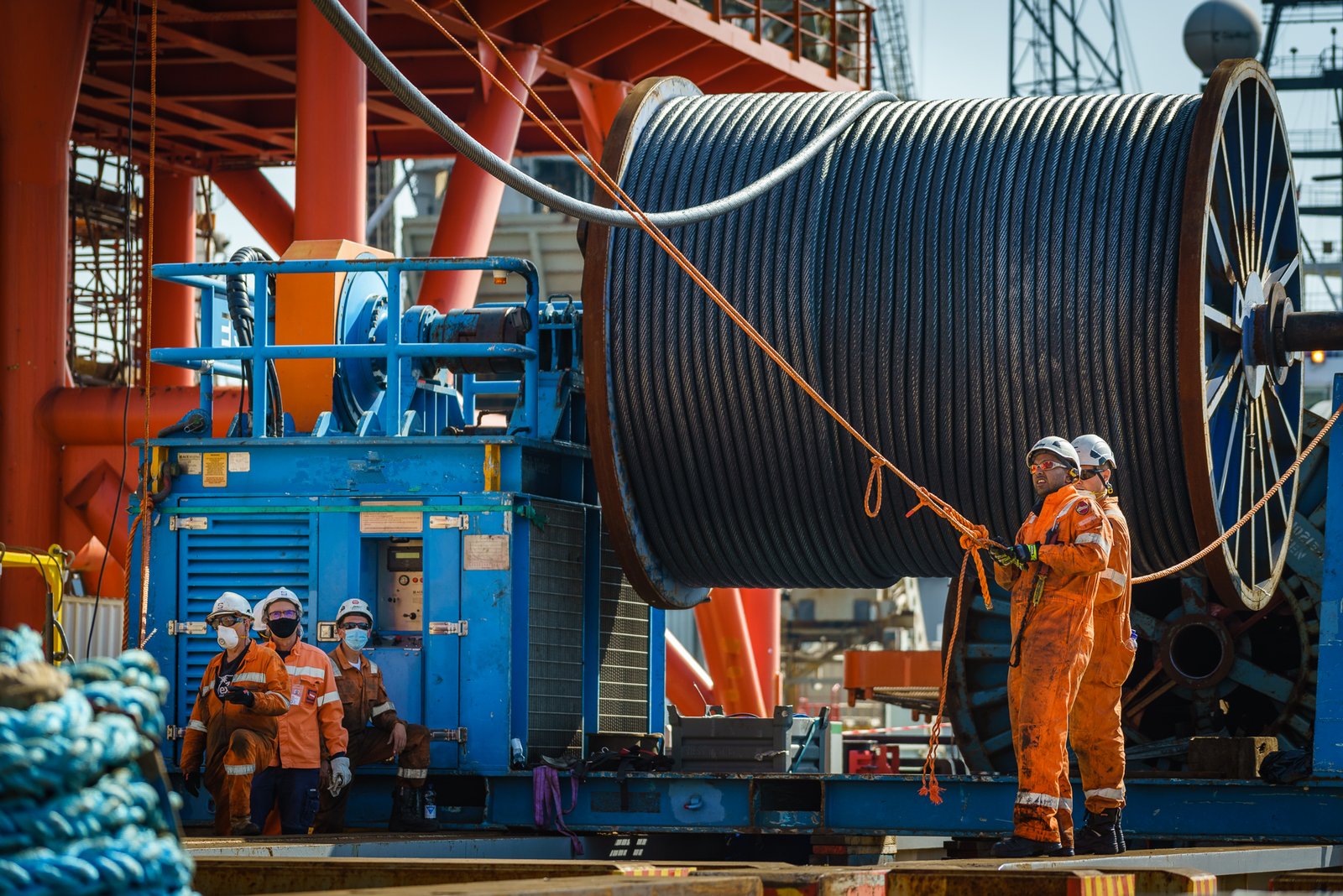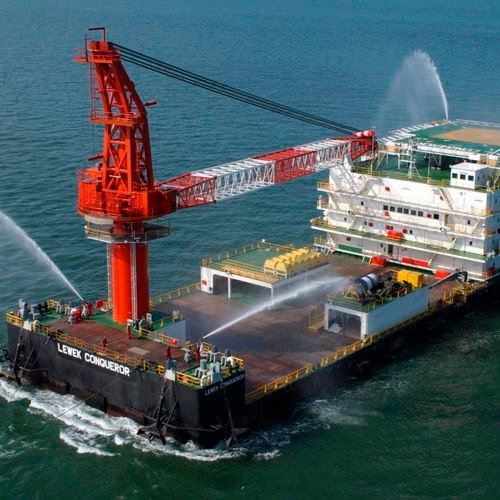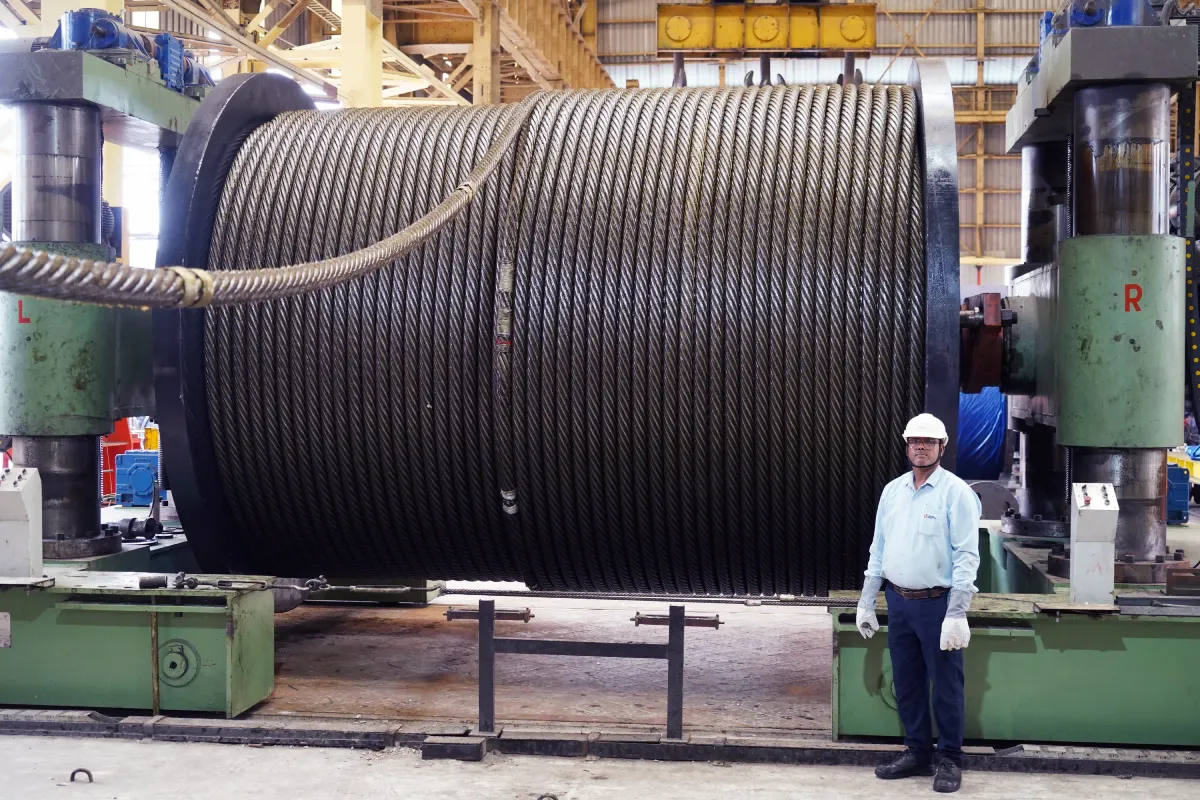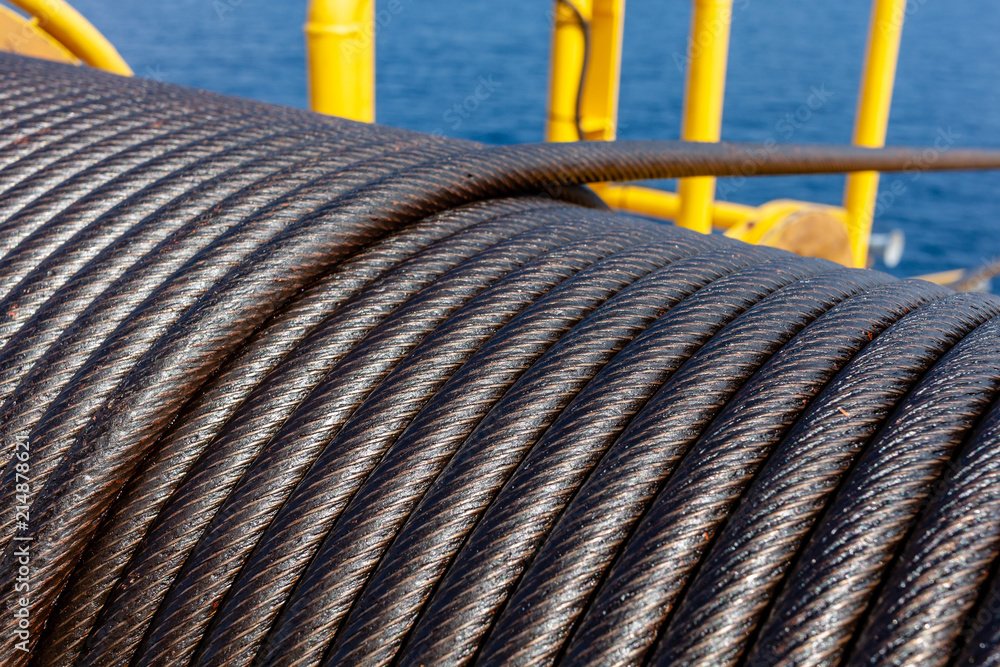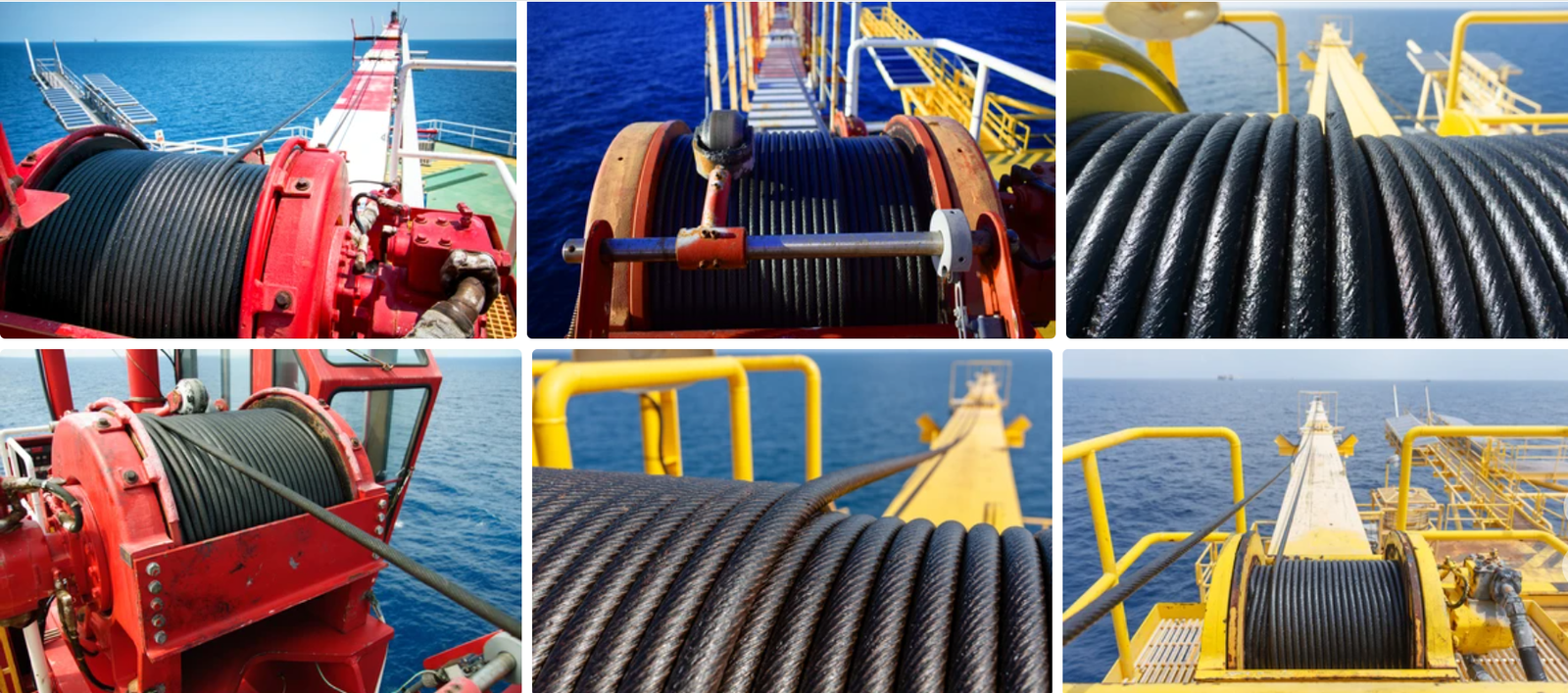Choosing the wrong rope can lead to equipment failure and serious accidents at sea. The financial and safety risks are too high to ignore. You need a reliable solution.
The best rope for ships and vessels is one that matches the specific application. It must have high tensile strength, excellent corrosion resistance, and verified certification like EN12385-4 to ensure safety and long service life.
I remember visiting a port and seeing a mooring rope that was badly frayed and rusted. It made me realize the huge, unseen risks many operators take every day. This is why selecting the right rope is so important.
What Exactly Defines a Marine Wire Rope?
Not all wire ropes can handle the harsh ocean environment. So, what makes a marine rope different from a standard one? It comes down to its special design and materials.
A marine wire rope is engineered specifically to resist corrosion from saltwater and extreme weather. Its construction provides the durability and strength needed for mooring, towing, and lifting operations on ships and vessels.

Let’s dive deeper into the components that make a wire rope suitable for the sea. The details are very important for performance and safety. Standard industrial ropes just won’t last long in these conditions.
The Core of the Rope
The core is the foundation of the wire rope’s strength and flexibility. You generally have two choices for marine applications.
- Independent Wire Rope Core (IWRC): This core is a small wire rope itself. It provides excellent strength and resistance to crushing. This is very important for ropes spooled on winch drums.
- Fiber Core (FC): This core is made of natural or synthetic fibers. It offers more flexibility than an IWRC. However, it is more prone to crushing and is not as strong.
For most heavy-duty marine jobs like mooring or crane operations, I always recommend an IWRC. It provides better structural support.
Key Performance Characteristics
When you look at a spec sheet, a few terms stand out. Understanding them helps you compare products effectively.
| Metric | What It Means | Why It Matters for Marine Use |
|---|---|---|
| Minimum Breaking Load (MBL) | The force at which the rope is expected to break. | This is the most critical safety factor. A higher MBL provides a larger safety margin for unpredictable sea conditions and shock loads. |
| Tensile Strength | The resistance of the steel wires to breaking under tension. | High-tensile wires allow for a stronger rope with a smaller diameter. This saves space and weight on board. |
| Fatigue Resistance | The rope’s ability to withstand repeated bending and stress. | Ropes on ships constantly run through sheaves and pulleys. Good fatigue resistance means a longer and safer service life. |
The Constant Battle Against Corrosion
Saltwater is incredibly corrosive to steel. A marine wire rope has several lines of defense. The first is the material finish. We will talk more about that later. The second is lubrication. A good marine rope is heavily lubricated during manufacturing. This lubricant protects the inner wires from moisture and reduces friction between strands. A rope that rusts from the inside out is a hidden danger.
Why Is EN 12385-4 Certification So Important for Marine Ropes?
You often see EN 12385-4 on a rope’s certificate. But what does this code really mean for your safety and operations? It is more than just a number.
EN 12385-4 is a European standard that guarantees a wire rope’s quality, safety, and performance characteristics. It provides independent proof that the rope is manufactured correctly for demanding applications, including marine use.

Think of it as a promise from the manufacturer. This promise is verified by a set of strict rules. In my experience, customers who require this certification have fewer rope failures.
What Does the Standard Actually Cover?
The EN 12385-4 standard is very comprehensive. It doesn’t just check the final product. It governs the entire process.
- Raw Materials: It specifies the quality and grade of steel wire that must be used.
- Manufacturing Process: It sets rules for how the strands and rope are made to ensure consistency.
- Dimensional Tolerances: It controls the rope’s diameter to ensure it fits properly with sheaves and other equipment.
- Testing Procedures: It mandates specific tests, like a breaking force test, to verify the rope’s stated strength.
- Information: It requires the manufacturer to provide clear information on the product, including its MBL.
Certified vs. Non-Certified: A Practical Comparison
Choosing a non-certified rope might save a little money upfront. But the risks are significant. Here is a simple comparison based on what I have seen in the industry.
| Aspect | Certified Rope (EN 12385-4) | Non-Certified Rope |
|---|---|---|
| Safety Assurance | High. Performance is verified by a recognized standard. | Low. Performance is based only on the manufacturer’s claim. |
| Traceability | Fully traceable. You can track its production batch and materials. | Often difficult or impossible to trace. |
| Insurance & Liability | Preferred by insurance companies. Reduces liability in case of an accident. | May increase liability. Insurers may question its quality after an incident. |
| Market Access | Accepted in regulated markets like the EU, Australia, and Canada. | May be rejected by port authorities or major corporate clients. |
What About Other Certifications?
While EN 12385-4 is a key benchmark for manufacturing, classification societies offer another layer of approval. These organizations certify that a product is suitable for a specific ship.
I often get requests for certificates from:
- DNV (Det Norske Veritas)
- ABS (American Bureau of Shipping)
- RMRS (Russian Maritime Register of Shipping)
- BV (Bureau Veritas)
If a client’s vessel is classed by one of these societies, we can have the ropes inspected and certified by them before shipment. This ensures full compliance with their vessel’s requirements.
Should You Choose Galvanized or Stainless Steel Rope?
This is one of the most common questions I get from buyers. Both options fight rust, but they do it differently. The right choice depends on your budget and specific application.
Galvanized rope is a cost-effective solution with good corrosion resistance. Stainless steel rope offers superior corrosion resistance and a longer lifespan in extreme environments, but at a much higher cost.
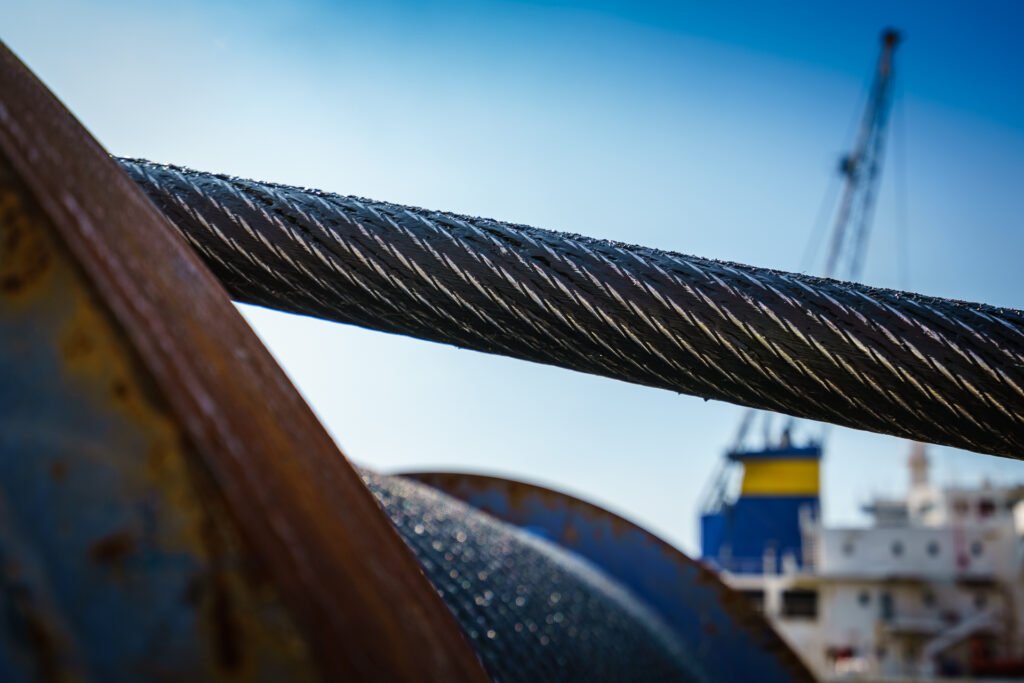
I’ve worked with clients who swear by stainless steel. I’ve also worked with others who achieve great results with galvanized ropes through proper maintenance. Let’s break down the differences.
How They Resist Corrosion
- Galvanized Rope: This rope is made from carbon steel wires that are coated with a layer of zinc. The zinc acts as a sacrificial barrier. It corrodes first, protecting the steel underneath. We typically use a hot-dip galvanization process for a thick, durable coating.
- Stainless Steel Rope: This rope is made from a steel alloy that includes chromium. The chromium creates a passive, invisible layer on the surface that prevents rust from forming. It is inherently corrosion-resistant, so it doesn’t rely on a coating.
A Head-to-Head Comparison
This table should help you decide which material is better for your needs.
| Feature | Galvanized Steel Wire Rope | Stainless Steel Wire Rope |
|---|---|---|
| Corrosion Resistance | Good to excellent. The zinc coating will eventually wear off. | Superior. Resists rust even if scratched. Ideal for constant saltwater immersion. |
| Cost | Lower initial cost. More budget-friendly. | Significantly higher initial cost. Often 3-5 times more expensive. |
| Strength | Very high. Carbon steel has excellent tensile strength. | Generally lower tensile strength than galvanized rope of the same size. |
| Maintenance | Requires regular inspection for zinc wear and re-lubrication. | Lower maintenance. Requires cleaning to maintain its passive layer. |
| Typical Use Cases | Mooring lines, crane ropes, general-purpose vessel ropes. | Lifeboat davits, architectural rigging, yacht rigging, submerged applications. |
For most commercial ships, a high-quality galvanized wire rope offers the best balance of performance and cost. For yachts or applications where appearance and maximum corrosion resistance are critical, stainless steel is the better choice.
When Is a Plastic Impregnated Wire Rope a Better Choice?
Sometimes, galvanization alone isn’t enough. In very abrasive or gritty environments, a special type of rope offers much better protection. This is where plastic impregnation comes in.
A plastic impregnated wire rope is a better choice when the rope needs extra protection against internal abrasion and corrosion. The plastic seals the rope, extending its service life in harsh conditions like anchor lines or crane ropes.

Imagine a rope constantly grinding against itself while covered in sand and salt. The internal wires will wear out quickly. We developed our plastic impregnated ropes to solve this exact problem.
How Does It Work?
During the manufacturing process, we inject a special polymer plastic into the rope. This plastic completely fills the empty spaces between the strands and the core. This process has several key benefits.
- It Seals the Core: The plastic creates an impenetrable barrier. It prevents saltwater, sand, and other abrasive particles from getting inside the rope. This stops internal corrosion and wear before they can start.
- It Locks in Lubricant: The factory lubricant applied to the wires is sealed inside by the plastic. This ensures the rope stays well-lubricated for its entire life.
- It Improves Structural Stability: The plastic cushion between the strands reduces internal contact stress. This helps the rope keep its shape when spooled under high tension.
- It Improves Fatigue Life: By reducing internal friction and stress, the rope can withstand more bending cycles before it starts to fail. This makes it great for crane operations.
Applications Where It Excels
I usually recommend plastic impregnated ropes for the most demanding jobs on a vessel.
| Application | Why It’s a Good Fit |
|---|---|
| Mooring Winch Ropes | The rope is spooled under high tension, which can cause crushing. The plastic impregnation helps the rope maintain its round shape. |
| Anchor Lines | These ropes are often in contact with the seabed, exposing them to sand and grit. The plastic seal protects the inner wires. |
| Offshore Crane Ropes | These ropes operate in the most corrosive environment and undergo constant bending. The extended fatigue life and corrosion protection are critical. |
While the initial cost is slightly higher than a standard galvanized rope, the extended service life often makes it a more economical choice in the long run.
Conclusion
Choosing the right marine rope comes down to safety, compliance, and long-term value. Always prioritize certified quality for reliable performance at sea.

